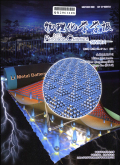物理化学学报2024,Vol.40Issue(4):89-106,18.DOI:10.3866/PKU.WHXB202306003
在过渡金属催化剂上的C―C键断裂以实现生物质的升级
Cleavage of C―C Bonds for Biomass Upgrading on Transition Metal Electrocatalysts
摘要
Abstract
Transforming the current structure of energy production and consumption,which currently excessively relies on fossil fuels,into a more efficient utilization of renewable energy,is an effective solution for addressing the energy crisis and achieving carbon neutrality.Biomass represents one of the most promising sources of renewable energy,capable of replacing fossil fuels and yielding valuable organic compounds.In recent years,the vigorous utilization of biomass energy sources has become an inevitable trend.The conventional thermochemical catalysis method used for biomass conversion often requires harsh conditions,such as high temperatures and pressures,and even external sources of hydrogen or oxygen.In comparison,the electrocatalytic conversion of organic molecules derived from biomass offers a greener and more efficient strategy for producing high-value chemicals under relatively mild conditions.Particularly,the cleavage of carbon chains through C―C bond cleavage is crucial in transforming biomass-derived molecules into short-chain chemicals of high value.Numerous studies have demonstrated that transition metal(TM)electrocatalysts play a critical role in the C―C bond cleavage of organic compounds,owing to their rich 3d electron structure and unique eg orbitals that enhance the covalence of transition metal-oxygen bonds.Moreover,the coordination environments and electronic structures of TM electrocatalysts can influence the selectivity of the products.Undoubtedly,well-defined active sites and reaction pathways facilitate a comprehensive understanding of the structure-activity relationship between catalyst structure and reaction activity.However,the electrocatalytic cleavage of C―C bonds for biomass upgrading on TM electrocatalysts is still in its initial stages,and the reaction mechanism and catalytic processes remain unclear.Therefore,there is a need to systematically comprehend the role of electrocatalysts at the atomic level during the C―C bond cleavage process.This review begins by providing an overview of the extensively studied TM electrocatalysts that mediate C―C bond cleavage reactions of organic molecules derived from biomass,including glycerol,cyclohexanol,lignin,and furfural.Several representative examples and corresponding reaction pathways are presented.Subsequently,we systematically review the reaction mechanisms underlying the catalytic C―C bond cleavage by transition metal compounds,elucidate interfacial behaviors,and establish a structure-activity relationship between the structure of TM electrocatalysts and cleavage reaction activity.Finally,we provide a brief summary of the content covered and highlight the challenges and prospects in exploring C―C bond cleavage on TM electrocatalysts.It is anticipated that this work will serve as a guide for the controlled conversion of biomass and the rational design of TM electrocatalysts for C―C bond cleavage.关键词
电催化生物质升级/C―C键断裂/电催化/过渡金属催化剂Key words
Electrocatalytic biomass upgrading/C―C bond cleavage/Electrocatalysis/Transition metal catalyst分类
化学引用本文复制引用
卢卓然,李圣凯,逯宇轩,王双印,邹雨芹..在过渡金属催化剂上的C―C键断裂以实现生物质的升级[J].物理化学学报,2024,40(4):89-106,18.基金项目
The project was supported by the National Key R&D Program of China(2020YFA0710000),the National Natural Science Foundation of China(22122901),the Provincial Natural Science Foundation of Hunan,China(2021JJ0008,2021JJ20024,2021RC3054),the Shenzhen Science and Technology Program,China(JCYJ20210324140610028).国家重点研发计划(2020YFA0710000),国家自然科学基金(22122901),湖南省自然科学基金(2021JJ0008,2021JJ20024,2021RC3054),深圳市科技计划(JCYJ20210324140610028)资助项目 (2020YFA0710000)

